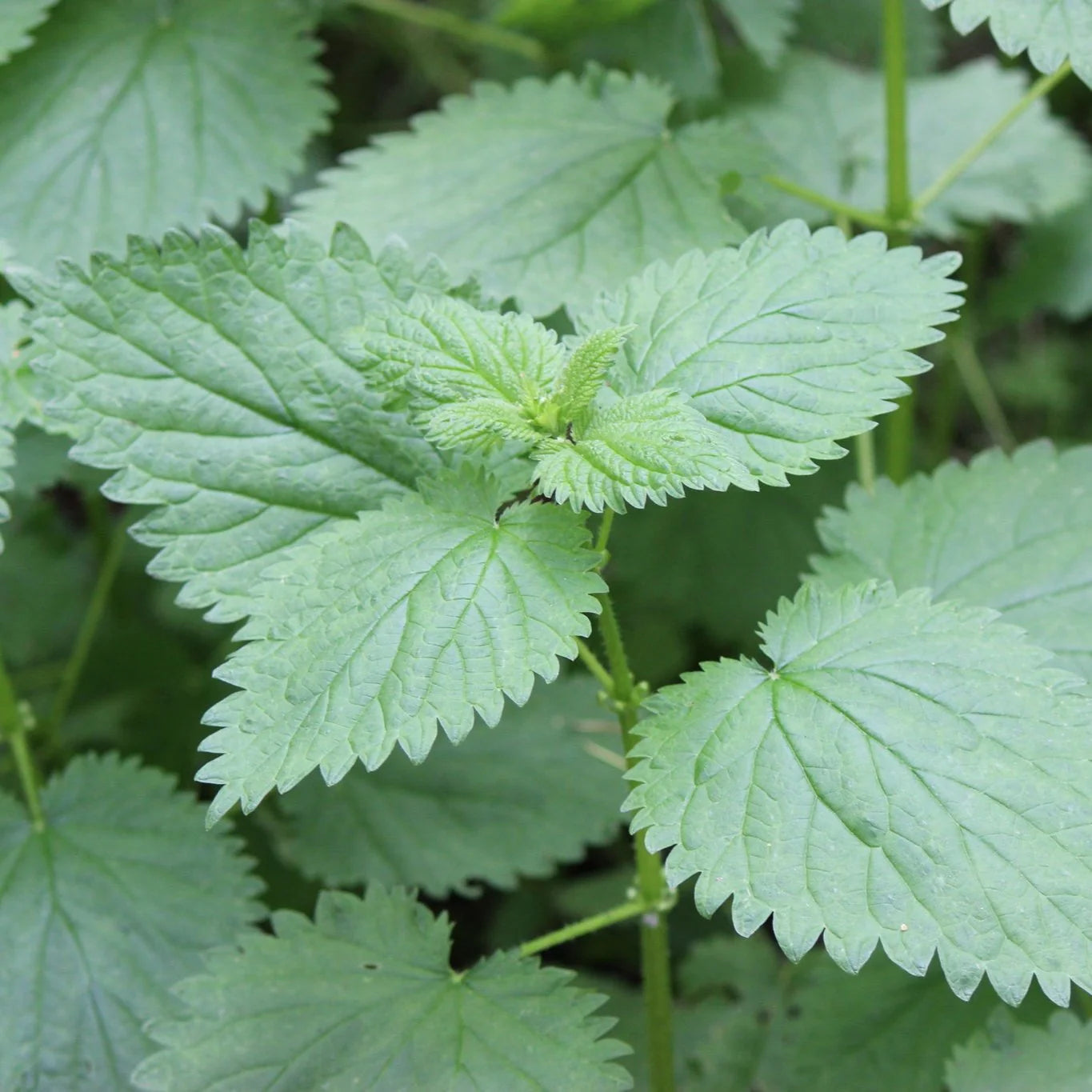
Dharaseeds
Stinging Nettle Seeds
Estimated delivery between February 04 and February 07.
Stinging Nettle (Urtica dioica) is a highly beneficial plant, valued both for its medicinal properties and its ability to enrich the soil. Known for its sharp, stinging hairs, nettle is often found in wild or untended areas but can be cultivated in gardens as a powerhouse for organic gardening. The plant is a great companion for vegetable gardens, improving soil fertility and attracting beneficial insects. Stinging nettle leaves can be harvested and used in herbal remedies, teas, and even as a nutrient-rich fertilizer.
Key Benefits
- Nutrient-Rich: Nettle is packed with vitamins, minerals, and antioxidants, making it a great plant for herbal teas, tinctures, and even culinary uses.
- Soil Enrichment: Nettle is known to improve soil quality by increasing nitrogen levels and attracting beneficial microorganisms, making it ideal for companion planting in gardens.
- Health Benefits: Nettles have been used in traditional medicine to treat various ailments, including joint pain, anemia, and allergies. The leaves can be used fresh or dried for tea, or applied as a topical remedy for skin conditions.
- Attracts Beneficial Insects: Nettles are an excellent source of nectar for pollinators like bees and butterflies, improving biodiversity in your garden.
Variety Features
- Plant Type: Perennial herb.
- Height: Grows between 3-6 feet tall, with some varieties reaching up to 8 feet.
- Leaves: Dark green, serrated leaves with stinging hairs that release a burning sensation upon contact.
- Flowers: Small, greenish flowers grow in clusters, typically found in late spring to early summer.
- Roots: Strong and spreading, making it a great ground cover for areas with poor soil.
Planting Instructions
Best Planting Season
- Spring or Fall: Nettle seeds are typically sown in the spring or fall, after the risk of frost has passed.
Ideal Location
- Light Requirements: Full sun to partial shade. Nettle prefers moist, shaded areas but can adapt to a variety of conditions.
- Soil: Prefers fertile, moist, well-draining soil but can tolerate a variety of soil types, including slightly acidic to neutral pH.
Planting Details
- Sowing Depth: Sow the seeds about 1/8 inch deep. Lightly cover the seeds with soil and press them down gently for good soil contact.
- Spacing: Space the seeds or seedlings about 12-18 inches apart to allow for healthy growth and prevent overcrowding.
Germination
- Temperature: Ideal germination temperatures range from 60°F to 75°F (15°C-24°C).
- Time to Germinate: Seeds usually take 7-14 days to germinate, depending on the temperature and moisture level.
- Moisture: Keep the soil consistently moist, but not soggy, to encourage germination.
Care Instructions
Watering
- Watering Needs: Keep the soil moist, particularly during dry spells. Nettles thrive in moist, rich soils and can tolerate occasional drought once established.
Temperature
- Hardiness: Stinging nettles are hardy in USDA Hardiness Zones 3-9, meaning they can survive cold winters and grow back every year in many regions.
Pruning
- Maintenance: Nettles may need some occasional pruning to keep them from becoming too invasive in your garden. You can cut back the stems after flowering to encourage new growth.
Harvesting
- Leaves: Harvest the leaves when they are young and tender, typically in spring and early summer, before the plant starts flowering. Use gloves when harvesting to avoid being stung by the plant's hairs.
- Seeds: Nettles produce seeds in late summer. Harvest seeds when they are fully mature and dry, and store them in a cool, dry place for future planting.
Storage
- Seeds: Store seeds in a dry, airtight container in a cool, dark location until you're ready to plant them again.
Culinary Uses
- Tea: Nettle leaves can be dried and used to make a nutrient-dense tea, rich in vitamins A, C, and K, as well as minerals like iron and calcium.
- Soup or Stews: Fresh or dried nettles can be added to soups or stews, imparting a slightly earthy, spinach-like flavor.
- Cooking: Nettles are used in various dishes such as pesto, and as a substitute for spinach in recipes. Always cook or dry nettles to remove their stinging properties before eating.
Conclusion
Stinging Nettle is a versatile, hardy plant with numerous uses in the garden and beyond. It’s an excellent choice for improving soil quality, attracting pollinators, and offering a rich source of medicinal benefits. With its quick-growing nature and ability to thrive in a range of soil types, nettles are an ideal addition to any garden, especially when planted alongside vegetables and other companion plants. Just be sure to handle with care during harvesting, as its stinging hairs can cause irritation.







